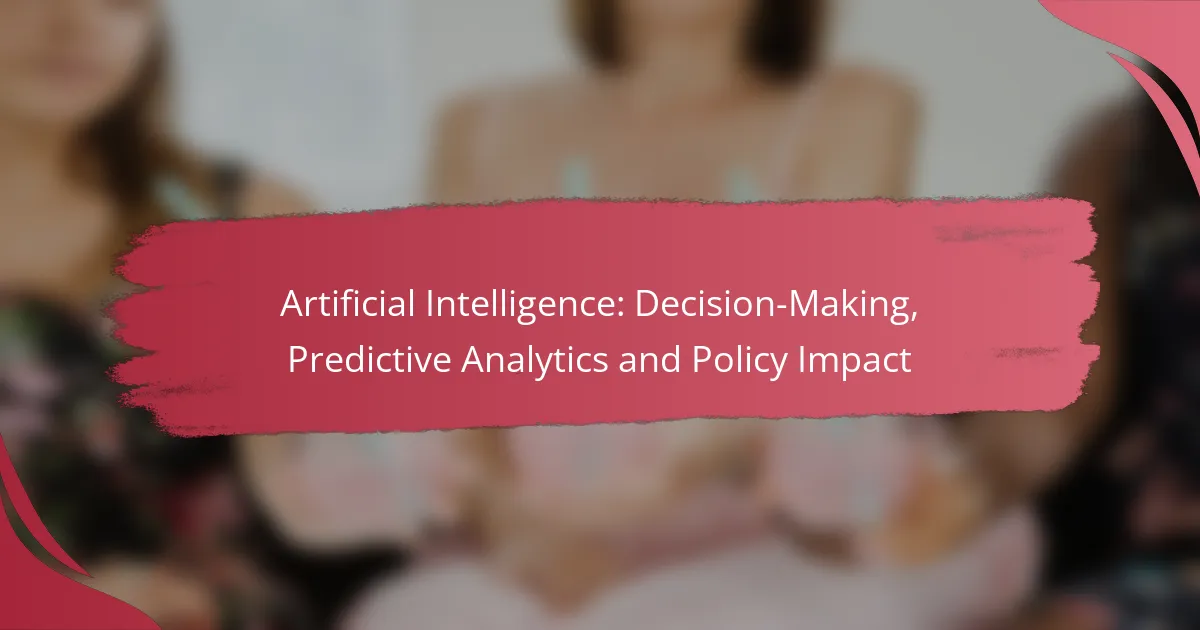Artificial Intelligence (AI) plays a crucial role in enhancing decision-making by swiftly analyzing large datasets and delivering actionable insights. Through predictive analytics, organizations can forecast future events and make informed choices, leading to improved efficiency and effectiveness. Additionally, AI’s ability to provide data-driven insights significantly influences policy development, enabling policymakers to create more responsive and effective regulations.

How Does Artificial Intelligence Enhance Decision-Making?
Artificial Intelligence (AI) enhances decision-making by analyzing vast amounts of data quickly and providing actionable insights. It enables organizations to make informed choices based on predictive analytics and automated recommendations, improving overall efficiency and effectiveness.
Improved data analysis
AI systems can process and analyze large datasets far more efficiently than traditional methods. By employing machine learning algorithms, these systems identify patterns and trends that may not be immediately apparent to human analysts.
For instance, businesses can leverage AI to analyze customer behavior, leading to more targeted marketing strategies. This data-driven approach can result in significantly higher conversion rates and improved customer satisfaction.
Real-time insights
AI provides real-time insights that allow organizations to respond swiftly to changing conditions. With continuous data monitoring, AI tools can alert decision-makers to emerging trends or potential issues as they arise.
For example, in the financial sector, AI can analyze market fluctuations and provide instant recommendations for trading strategies. This capability can help firms capitalize on opportunities or mitigate risks effectively.
Automated recommendations
AI can generate automated recommendations based on data analysis and predictive modeling. These recommendations help streamline decision-making processes by offering actionable options tailored to specific scenarios.
In healthcare, for instance, AI can suggest treatment plans based on patient data and historical outcomes. This not only saves time for medical professionals but also enhances patient care by ensuring evidence-based decisions.
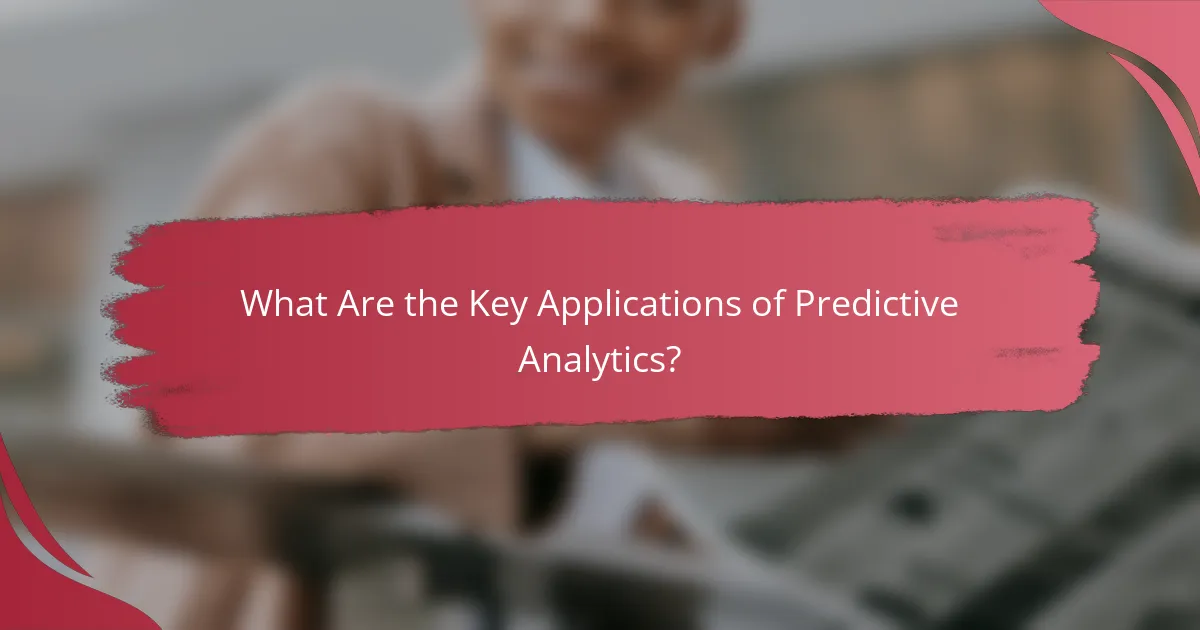
What Are the Key Applications of Predictive Analytics?
Predictive analytics is primarily used to forecast future events based on historical data, enabling organizations to make informed decisions. Key applications include customer behavior forecasting, risk assessment in finance, and supply chain optimization.
Customer behavior forecasting
Customer behavior forecasting utilizes predictive analytics to anticipate how consumers will act based on past purchasing patterns and trends. By analyzing data such as transaction history and demographic information, businesses can tailor marketing strategies to better meet customer needs.
For example, retailers can predict which products are likely to be popular in upcoming seasons, allowing them to adjust inventory accordingly. This approach can improve sales by as much as 20% when executed effectively.
Risk assessment in finance
In finance, predictive analytics plays a crucial role in assessing risks associated with loans, investments, and market fluctuations. By evaluating historical data and current market conditions, financial institutions can identify potential defaults or investment losses.
For instance, banks often use predictive models to determine the creditworthiness of applicants, which can reduce default rates significantly. Implementing these models can lead to a more efficient allocation of resources and improved profitability.
Supply chain optimization
Predictive analytics enhances supply chain management by forecasting demand, optimizing inventory levels, and improving logistics. By analyzing factors such as sales trends and seasonal variations, companies can streamline operations and reduce costs.
For example, businesses can use predictive models to determine the optimal stock levels needed to meet customer demand without overstocking. This can lead to cost savings of 10-30% in inventory management and increased customer satisfaction due to better product availability.
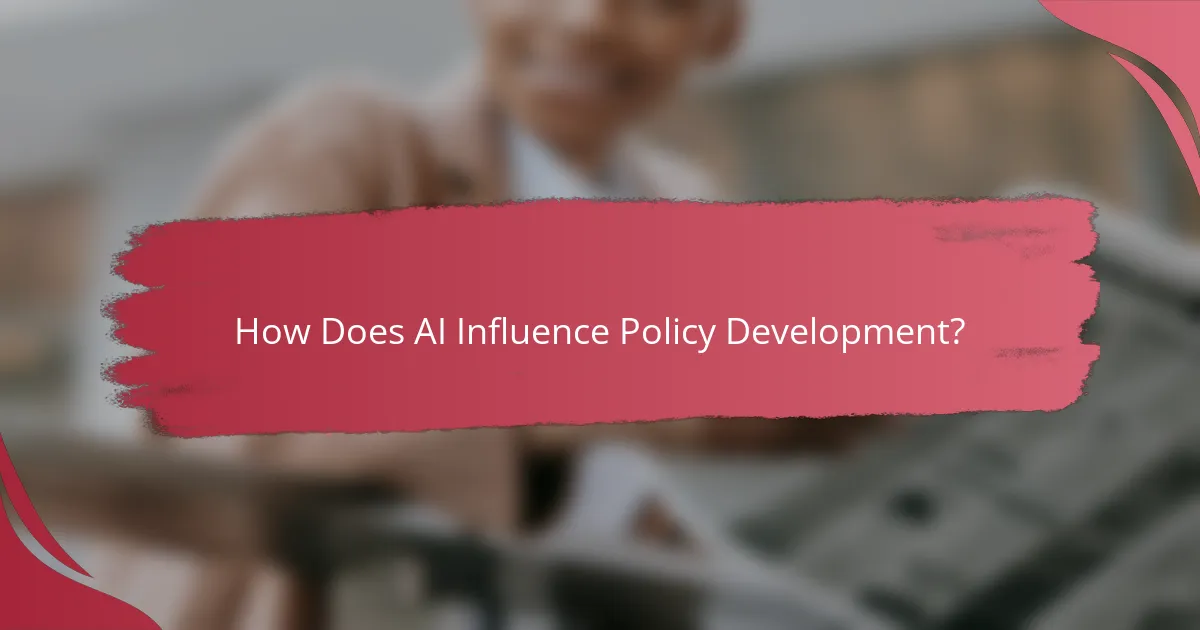
How Does AI Influence Policy Development?
AI significantly impacts policy development by providing data-driven insights that enhance decision-making processes. By analyzing vast amounts of data, AI tools can identify trends and predict outcomes, allowing policymakers to create more effective and responsive regulations.
Data-driven policy recommendations
Data-driven policy recommendations leverage AI algorithms to analyze historical and real-time data, helping policymakers understand the implications of their choices. For example, AI can evaluate the effectiveness of past policies and suggest adjustments based on predictive analytics. This approach ensures that recommendations are grounded in empirical evidence rather than assumptions.
To implement data-driven recommendations effectively, policymakers should prioritize data quality and relevance. Engaging with data scientists and domain experts can help ensure that the insights generated are actionable and tailored to specific policy areas.
Impact assessment tools
AI-powered impact assessment tools evaluate the potential effects of proposed policies before they are enacted. These tools simulate various scenarios, allowing policymakers to foresee possible outcomes and unintended consequences. For instance, a government might use AI to assess the economic impact of a new tax policy across different demographics.
When using impact assessment tools, it is crucial to consider the assumptions built into the models. Policymakers should regularly update these models with new data to maintain their accuracy and relevance, ensuring that they reflect current conditions and trends.
Public opinion analysis
AI can analyze public opinion by processing data from social media, surveys, and other feedback channels. This analysis helps policymakers gauge public sentiment regarding specific issues, enabling them to align their strategies with the needs and preferences of constituents. For example, sentiment analysis can reveal how citizens feel about proposed environmental regulations.
To effectively utilize public opinion analysis, policymakers should adopt a multi-channel approach, combining quantitative data with qualitative insights. Engaging with the public through consultations and forums can further enrich the understanding of community perspectives and foster trust in the policymaking process.
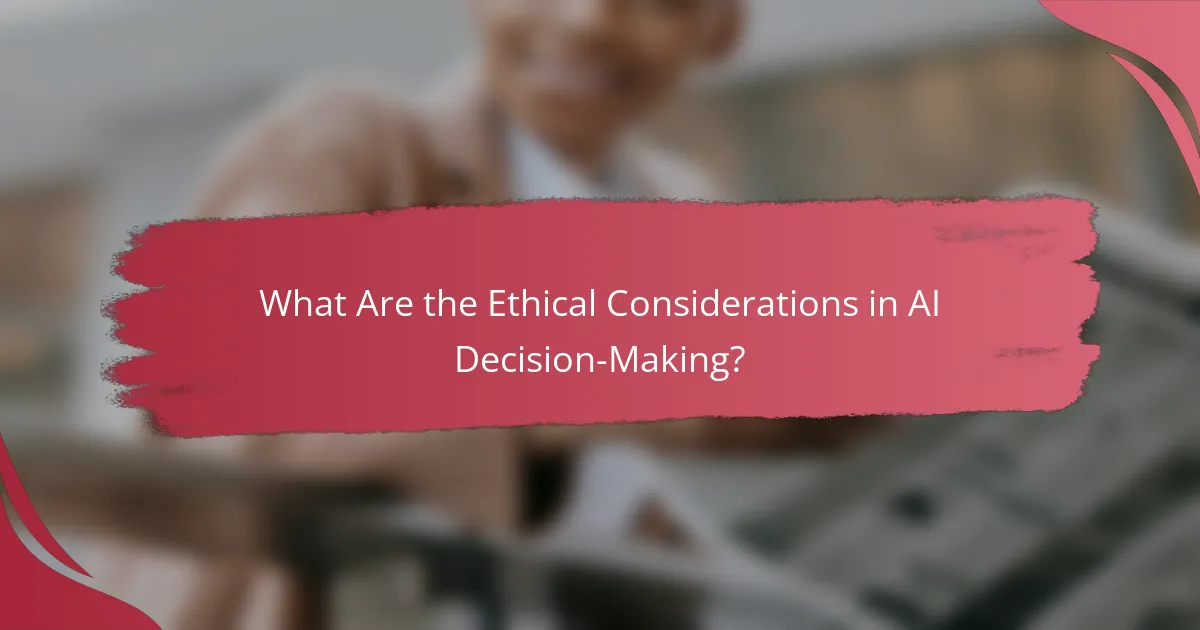
What Are the Ethical Considerations in AI Decision-Making?
Ethical considerations in AI decision-making revolve around fairness, accountability, and transparency. These factors are crucial to ensure that AI systems operate justly and do not perpetuate harm or discrimination.
Bias in algorithms
Bias in algorithms occurs when AI systems reflect or amplify existing prejudices present in the data they are trained on. This can lead to unfair treatment of certain groups, particularly in sensitive areas like hiring, law enforcement, and lending.
To mitigate bias, organizations should conduct regular audits of their AI systems, ensuring diverse datasets and implementing fairness metrics. For example, using balanced datasets can help reduce the risk of biased outcomes, while employing techniques like de-biasing algorithms can further enhance fairness.
Transparency and accountability
Transparency in AI decision-making means that the processes and data used by AI systems should be clear and understandable to users and stakeholders. This is essential for fostering trust and enabling informed decisions based on AI outputs.
Accountability involves establishing clear lines of responsibility for AI decisions. Organizations should document how AI systems are developed and deployed, and ensure there are mechanisms for addressing grievances. For instance, creating an oversight board can help monitor AI impact and guide ethical practices.

What Frameworks Support AI Implementation in Organizations?
Organizations can leverage various frameworks to effectively implement artificial intelligence (AI) solutions. These frameworks guide businesses in assessing their readiness, managing change, and integrating AI into their existing processes.
AI readiness assessment
An AI readiness assessment evaluates an organization’s current capabilities and infrastructure to support AI initiatives. This involves analyzing data quality, technological resources, and staff expertise to determine if the organization is prepared to adopt AI solutions.
Key steps in this assessment include identifying existing data sources, evaluating current technology stacks, and assessing employee skills. Organizations should consider conducting surveys or interviews to gather insights on readiness and potential barriers.
Change management strategies
Implementing AI often requires significant changes in workflows and employee roles, making change management strategies essential. These strategies help organizations navigate the transition smoothly and minimize resistance from staff.
Effective change management includes clear communication about the benefits of AI, training programs to upskill employees, and involving team members in the implementation process. Organizations should also establish feedback loops to address concerns and adapt strategies as needed.
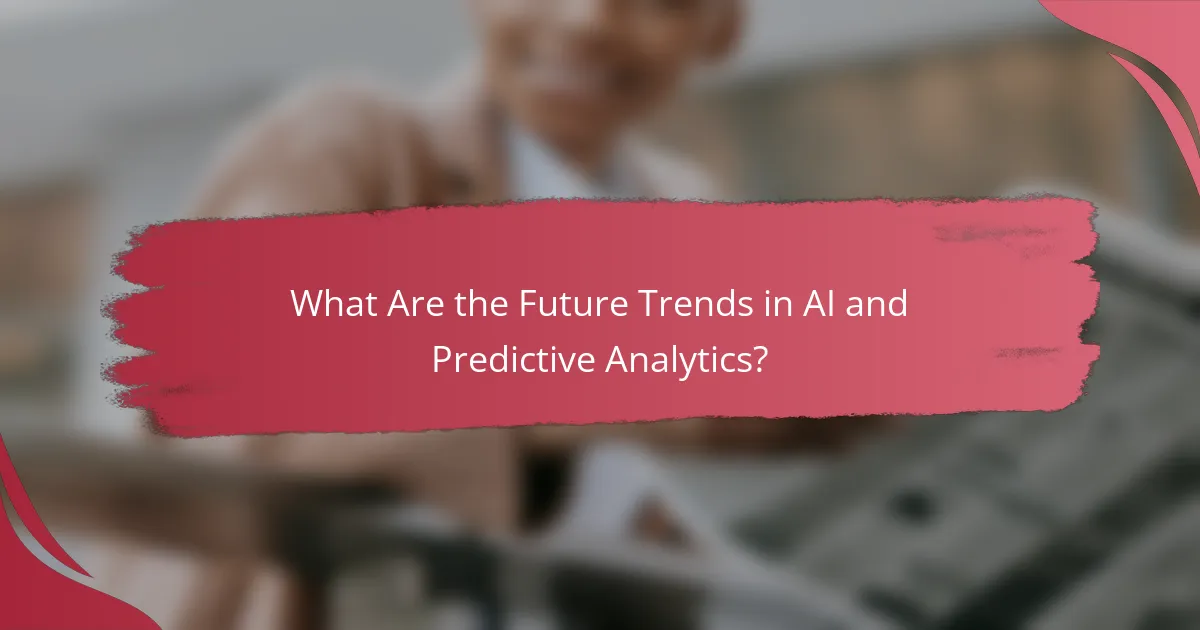
What Are the Future Trends in AI and Predictive Analytics?
Future trends in AI and predictive analytics focus on enhancing decision-making capabilities through improved data integration and real-time analysis. As technology evolves, the synergy between AI and various data sources will drive more accurate predictions and informed policy-making.
Integration with IoT
The integration of AI with the Internet of Things (IoT) is set to revolutionize predictive analytics by enabling real-time data collection and analysis. IoT devices generate vast amounts of data, which AI algorithms can process to identify patterns and trends that inform decision-making.
For instance, smart sensors in manufacturing can predict equipment failures before they occur, reducing downtime and maintenance costs. This proactive approach can save businesses significant amounts, often in the low tens of thousands of dollars annually, depending on the scale of operations.
To effectively leverage AI and IoT integration, organizations should focus on establishing robust data management practices. Ensuring data quality and security is crucial, as poor data can lead to inaccurate predictions. Regularly updating algorithms and investing in training for staff can also enhance the effectiveness of these technologies.
